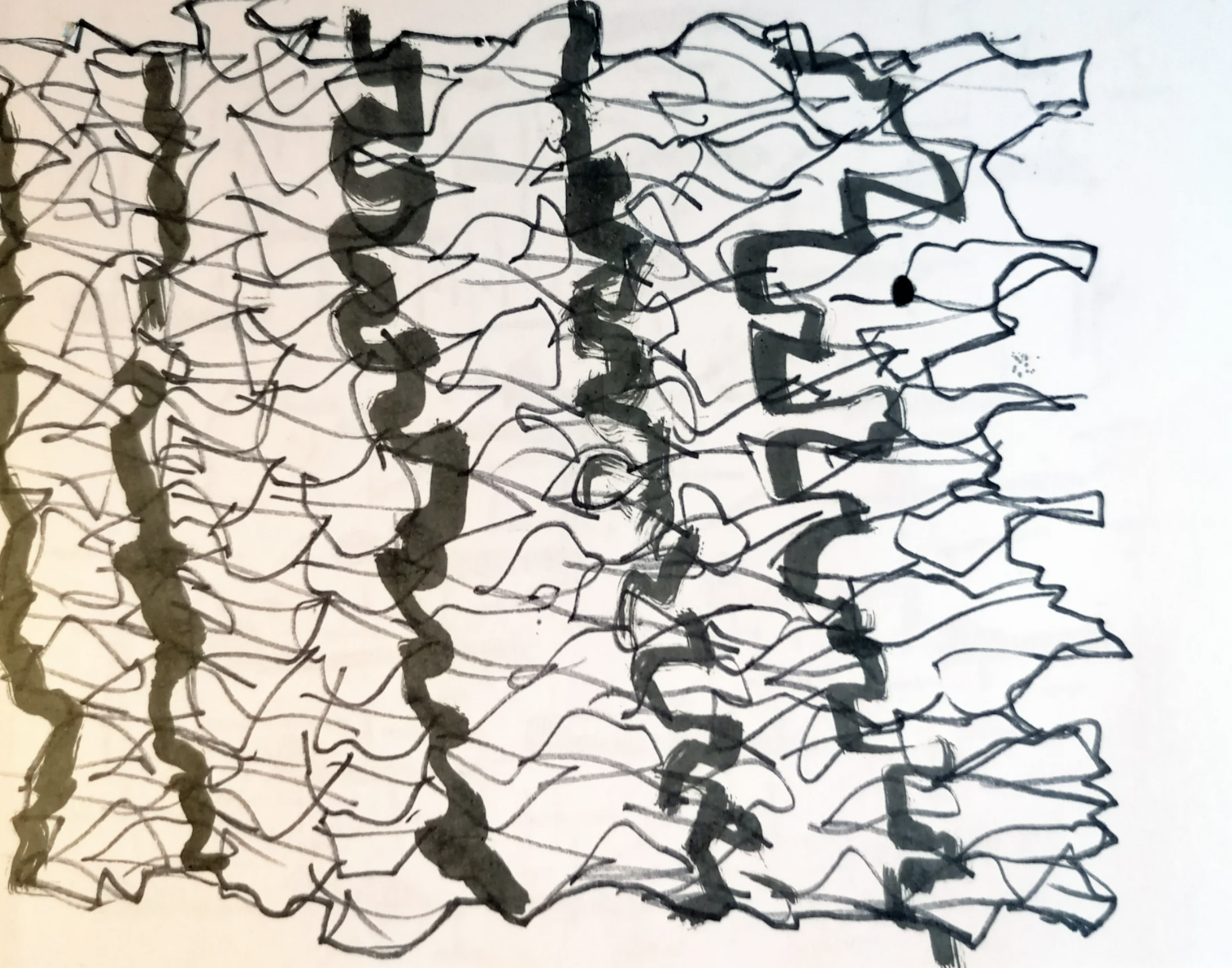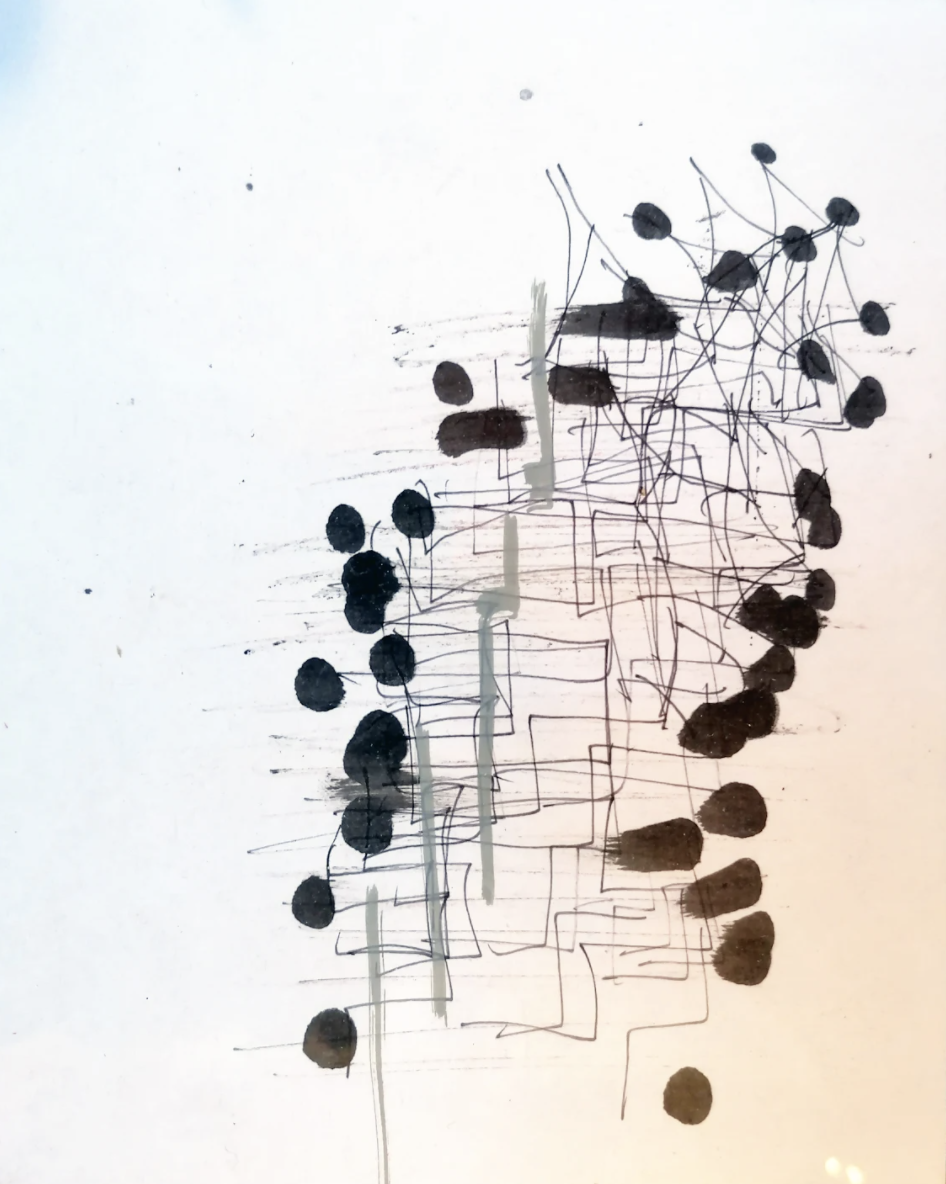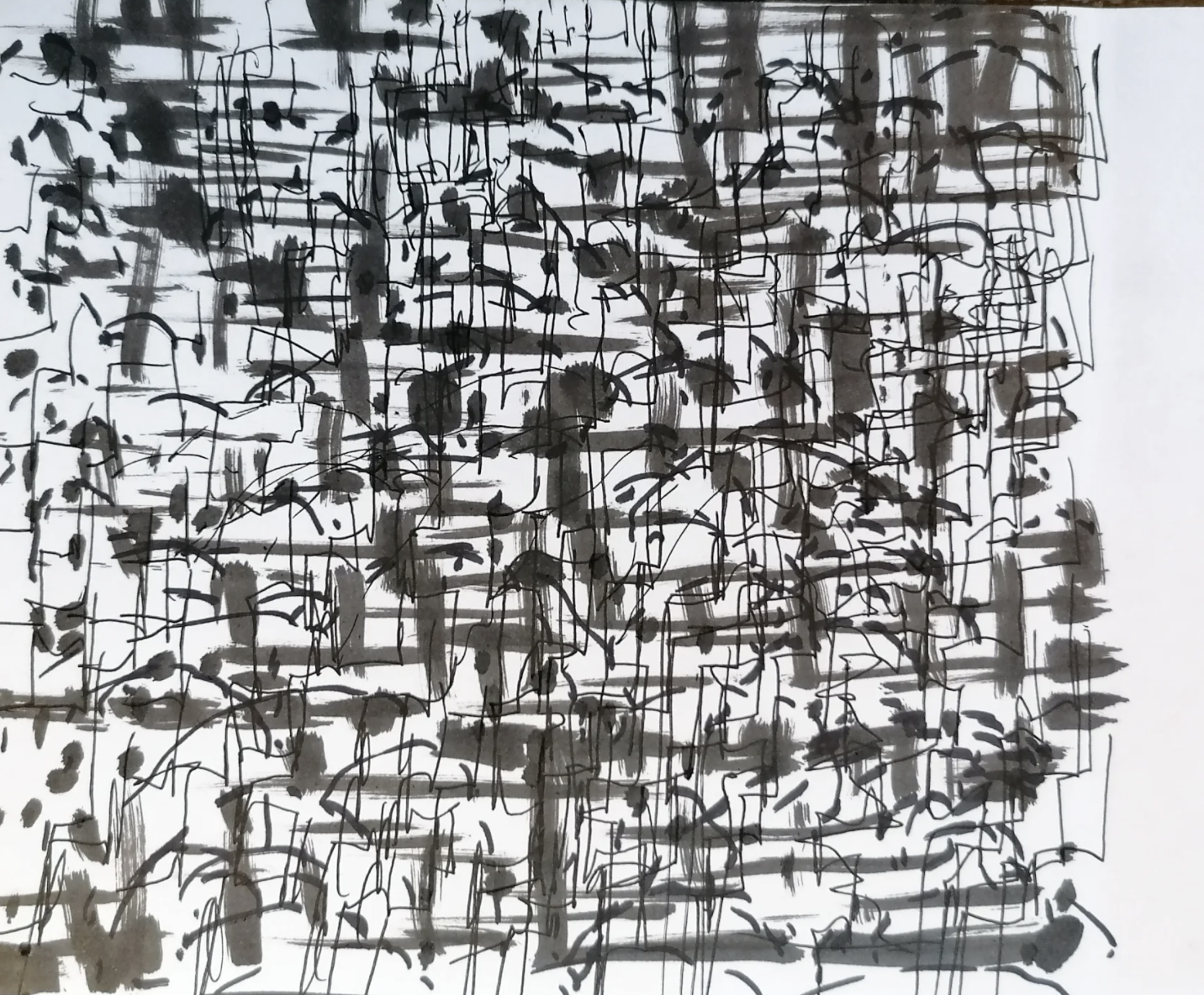Drawing as Stimming
Sam Metz
For ‘Drawing as Stimming’ you will need;
A hard surface to lean on, if you can, drawing on the floor is best – this allows you more space for movement and gesture, otherwise a table will be fine
A smooth surface to draw on, I have recently been drawing on tiles, but smooth paper will work just as well – a long rectangular shape allows you room to explore sequences of lines.
A black graffiti pen or marker pen or felt tip
Block colour e.g. spray can or paint
Method,
My work is non-verbal, so this bit is harder to explain.
Can you find a movement with your hand that interests you, think about the way your fingers interact with the space around your hand and visualise the shapes that your hand makes?
Imagine the shapes that your hand would make were there lines that extended from your fingers.
Now to find a repetitive rhythm. As adults we are socialised to contain our bodies, to sit upright, (people assigned female at birth particularly are taught not to occupy too much space). For this you will need to explore the space around you to help you draw and to occupy space. When I draw, I rock back and forth, extending movement from a rhythm in my stomach to my shoulders, to my wrist.
Observe the rhythm that drawing a line has through sensory feedback – the material resistance of the hard drawing on the surface and the tactile feedback you get,
Observe the feel of the mark,
Observe the sound that the drawing implement makes,
Observe the length of the sound that drawing your mark makes and repeat its tempo
Observe the unique choreography of the mark.
Learn the rhythm of the line and I repeat it.
Draw the same motif over another line, turning the paper, looking for sequences within the composition of the drawing, spaces in between the lines
At some point you will lose interest in the shape and rhythm of this mark and then you can find another, layering up marks until a composition emerges.
I have started to add blocks to my drawing, which act like punctuation and pauses in the composition, these can be created with block colour, draw or spray blocks on top of your lines to disrupt them.
Stimming is movement that can be reassuring and is body-based, as a neurodiverse artist, my own stimming can involve shaking hands and helps me to regulate my mood. Some of my work has been about legitimising stimming as a valid form of communication. I am interested here in visual empathy: the ability to read the physicality of the body through artwork. I use my drawings as a score for performance, but they are interesting in and of themselves, enjoy.



